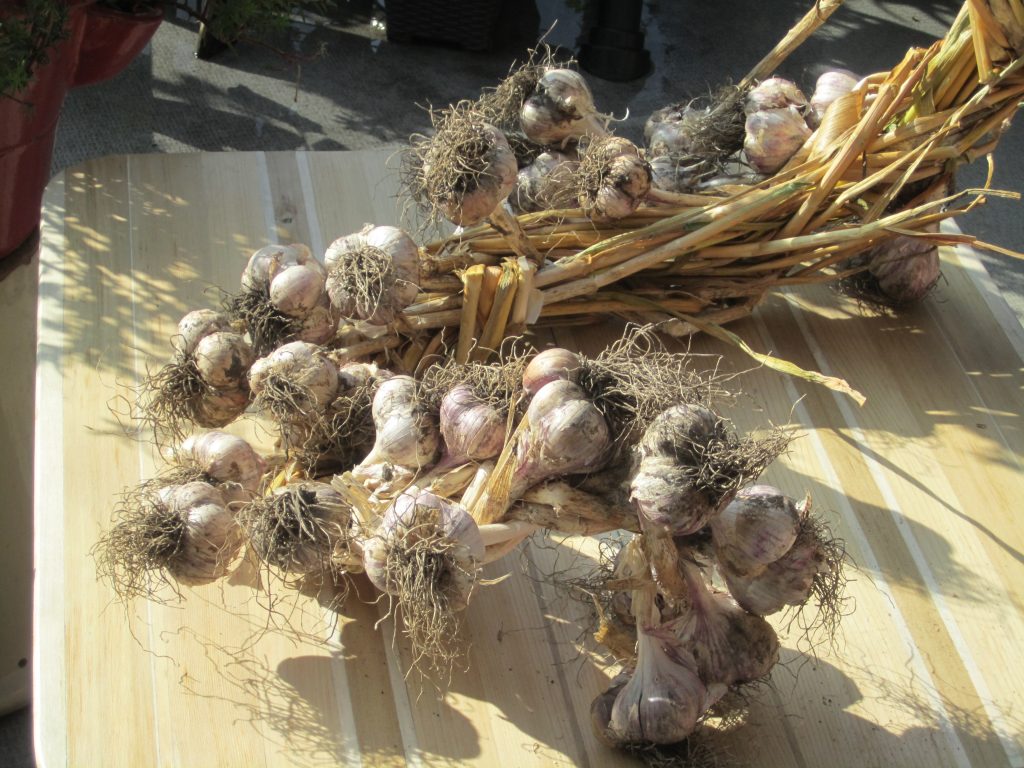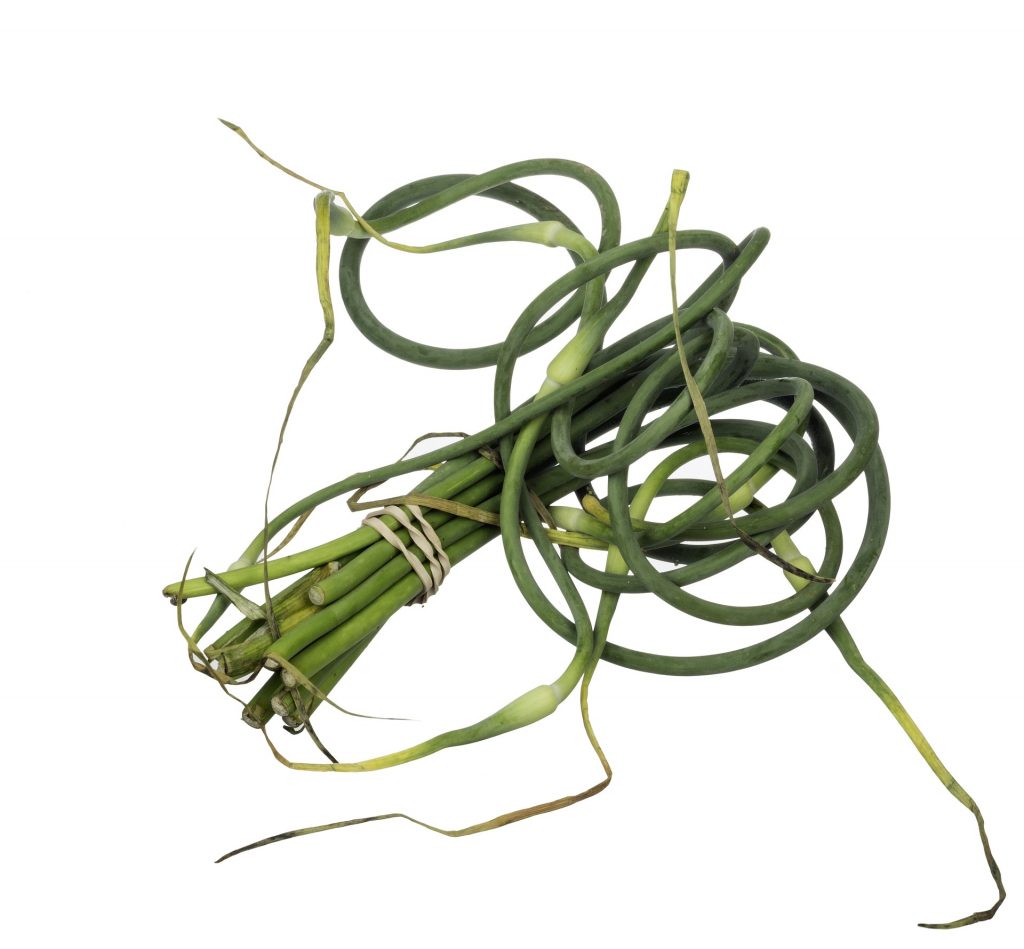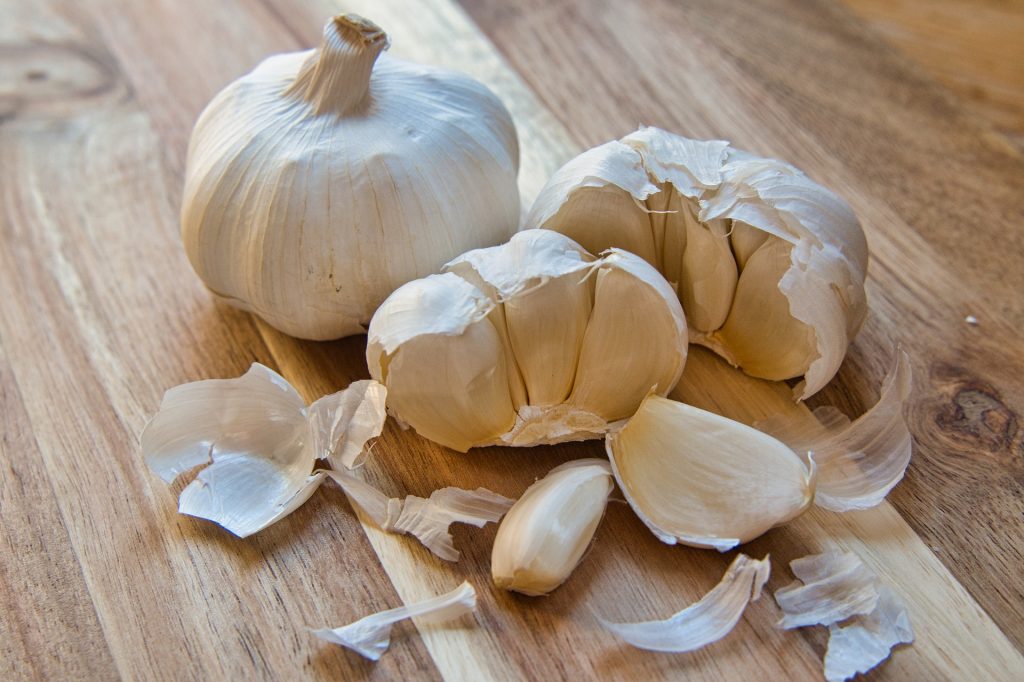If you were stranded on a desert island and could only choose one, would it be onion or garlic?
I’d opt for onion, I think. It grows bigger bulbs, so there’d be more of it to eat. But I have to say, it would be darn hard to live without garlic!
Fortunately, my garlic crop this year was much better than my potato harvest.
This is largely thanks to the amazing seed garlic I was able to buy from Smoky Lake’s Victoria Trail Organic (no longer in business). Truth be told, I didn’t buy last year’s garlic seed. I forgot to. Lucky for me, I found a couple of heads from the year before—forgotten in my fancy garlic keeper.

That’s what I planted. And here’s my harvest, all nicely braided and ready for winter eating.
Not bad!
It was my great-grandmother, Teklia (nee Bandura) Hewko, who taught me how to make garlic braids. It happened one summer when I was 8 or 10. Baba and I sat on my parents’ back step and made what seemed like dozens of garlic braids that day.
My babas and my mama always grew amazing garlic. They always had their own seed, but I don’t remember them doing anything special—other than planting it as soon as the ground could be worked in the spring.

My garlic-planting efforts were a dismal failure until a few years ago. The garlic gurus at Victoria Trail Organic explained that this was because most of the seed garlic we can buy is not actually hardy in our climate.
Victoria Trail Organic sold several Alberta-hardy hardneck varieties that produce scapes, which you can pick off and saute in butter—or grind into delicious pesto.
Photo courtesy of Anrita1705, Pixabay.
Now I plant my garlic in the fall and cover it with a thick mulch. That way, it can survive those crazy-mid-February warm spells where things start to grow and then are killed off when the snow comes back again.

The cloves are huge and incredibly flavourful.
One home-grown clove is easily as potent as an entire head of store-bought garlic. Even so, a big pot of something often needs a “Scottish clove” of home-grown garlic.
What’s a Scottish clove, you ask?
Here’s the story.
I first joined the Editors’ Association of Canada a couple of decades ago. One of the perks is an amazing e-forum on which members can debate the finer points of grammar—or simply chat.
One day, an association member related the story of her first encounter with 40-clove garlic chicken. She was a self-taught cook who grew up garlic free in Scotland. And she thought it would take forever to prepare 40 cloves of garlic for a recipe!
Eventually, she realized that when recipes had called for a clove of garlic, she had been adding an entire head. And her friends had always complimented her cuisine!
So now in my house, if a recipe calls for garlic, I often add a “Scottish clove.” And like my editor colleague, I’ve found that adding a Scottish clove rather than a regular clove makes for a tastier dish!